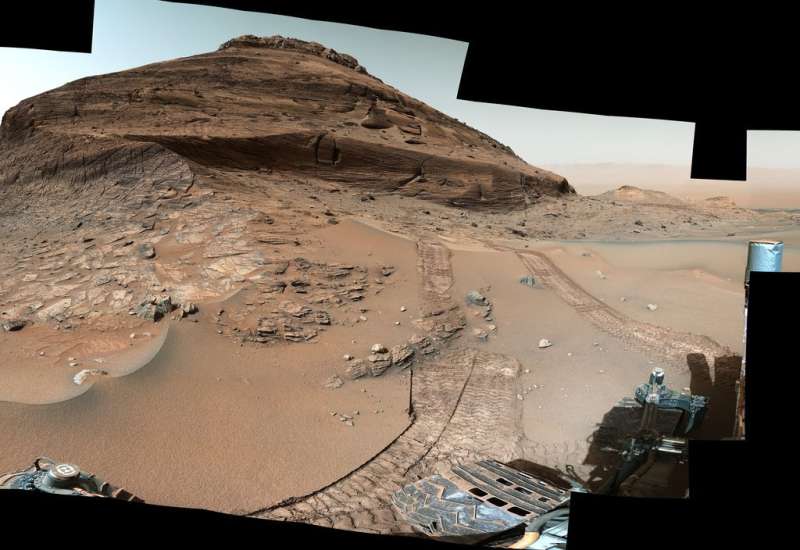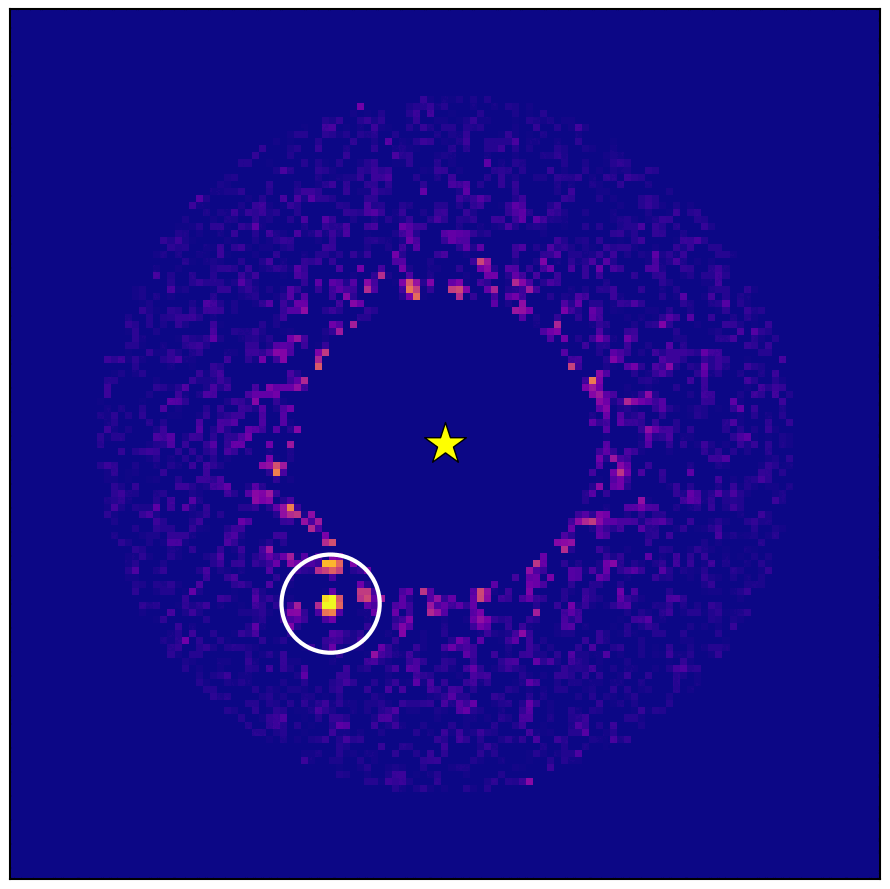NOAA looks to update weather satellite and ground systems
Thursday, 13 April 2023 19:53
The National Oceanic and Atmospheric Administration is soliciting proposals for research and development on microwave weather sensors, ground systems and technology to reduce interference from 5G networks.
NASA's Curiosity Mars rover gets a major software upgrade
Thursday, 13 April 2023 19:28
The update brings loads of improvements, the most significant being new driving capabilities.
Years in the making, a major software update that has been installed on NASA's Curiosity rover will enable the Mars robot to drive faster and reduce wear and tear on its wheels.
A rocket-powered spaceplane completes a successful test flight
Thursday, 13 April 2023 18:31
Access to space is getting easier and more accessible as more and more platforms are coming online that can significantly decrease the cost of getting into Earth's orbit or even beyond. Now, another company has taken a step forward in making inexpensive, reusable access to space a reality. Dawn Aerospace, which operates out of the U.S., New Zealand, and the Netherlands, has successfully tested a prototype spaceplane.
This isn't Dawn's first success, as the company already has satellite propulsion systems in orbit on 15 different satellites. It isn't even its first successful space plane test—they had previously completed some testing using jet engines. However, it is the first time the company has successfully tested a rocket-powered plane.
The series of three tests happened at the end of March at the Glentanner Aerodrome in New Zealand, where the plane successfully fired its rocket engine. Clocking it at over 170 knots and 6,000 ft of altitude may not seem like much, but it is a first step for the technology.
Wobbling star found in Gaia-Hipparcos data confirmed to host exoplanet
Thursday, 13 April 2023 18:12
Data from ESA’s star-mapping Gaia spacecraft has allowed astronomers to image a gigantic exoplanet using Japan's Subaru Telescope. This world is the first confirmed exoplanet found by Gaia’s ability to sense the gravitational tug or ‘wobble’ a planet induces on its star. And the technique points the way to the future of direct exoplanet imaging.
Boeing unveils WGS-11 design with new military payload
Thursday, 13 April 2023 18:02
A new version of the U.S. military’s Wideband Global Satcom (WGS) satellite unveiled by Boeing on April 13 has a new payload that the company designed under a U.S.
Draper completes initial milestones for NASA CLPS mission
Thursday, 13 April 2023 16:19
Draper has completed the first milestones of a NASA award to perform the first commercial landing on the far side of the moon in 2025.
Space Systems Command’s Tetra-1 begins mission operations
Thursday, 13 April 2023 11:00
Millennium Space Systems announced the handoff April 13 of the Tetra-1 microsatellite to the U.S. Space Force Space Systems Command for the start of mission operations.
ESCAPADE confident in planned 2024 New Glenn launch
Thursday, 13 April 2023 10:42
The head of a NASA Mars mission flying on Blue Origin’s New Glenn rocket says he is confident the vehicle will be ready in time for a launch next year.
Waking up Juice
Thursday, 13 April 2023 10:30 Video:
00:01:00
Video:
00:01:00
It takes a while for a new mission to wake up after the rigours of launch, but before it’s fully in flight configuration it’s still exposed to the harsh realities of space. During this critical period, known as the ‘Launch and Early Orbit Phase’ or ‘LEOP’, teams at ESA’s mission control in Darmstadt, Germany, have to work fast to establish contact with the fledgling mission, and ensure its solar arrays are correctly powering the mission.
Once ESA’s Jupiter Icy Moons Explorer, Juice, separates from its Ariane 5 rocket, there will be two key moments to look out for.
Kepler Communications raises $92 million for optical data relay network
Thursday, 13 April 2023 10:11
Canadian small satellite operator Kepler Communications said April 13 it has raised $92 million to start deploying an optical data-relay constellation next year.
China bans ships from area north of Taiwan Sunday due to 'falling rocket wreckage'
Thursday, 13 April 2023 08:49 China will ban ships from entering an area north of Taiwan on Sunday due to "possible falling rocket wreckage", a provincial maritime authority said.
The area around 100 miles (160 kilometres) from Taipei will be closed from 9 am (0100 GMT) to 3 pm (0700 GMT), the maritime safety administration of China's eastern Fujian province said Thursday, adding that ships will be "forbidden to enter".
China will ban ships from entering an area north of Taiwan on Sunday due to "possible falling rocket wreckage", a provincial maritime authority said.
The area around 100 miles (160 kilometres) from Taipei will be closed from 9 am (0100 GMT) to 3 pm (0700 GMT), the maritime safety administration of China's eastern Fujian province said Thursday, adding that ships will be "forbidden to enter". Slip and Pivot: Sol 3797
Thursday, 13 April 2023 08:49 As you can see in the above image, the terrain our rover drivers is navigating is challenging - slippery sand surrounding big, wheel-unfriendly rocks. These contrasting regimes contributed to us not-quite-arriving at our planned workspace with all six wheels confidently on known terrain.
Thus, we had to pivot from a combined contact and remote science day, to one with remote science and a
As you can see in the above image, the terrain our rover drivers is navigating is challenging - slippery sand surrounding big, wheel-unfriendly rocks. These contrasting regimes contributed to us not-quite-arriving at our planned workspace with all six wheels confidently on known terrain.
Thus, we had to pivot from a combined contact and remote science day, to one with remote science and a Taiwan seeks satellite solutions after undersea cables cut
Thursday, 13 April 2023 08:49 Taiwanese hostel worker Wang Chuang-jen's business took a hammering when undersea telecoms lines serving tiny Matsu archipelago were cut in February.
"It was very inconvenient," said the 35-year-old from Matsu's Beigan island, where customers struggled to book or pay online due to slow connectivity. "We all heavily depend on the internet."
The cut-off not only caused headaches for busine
Taiwanese hostel worker Wang Chuang-jen's business took a hammering when undersea telecoms lines serving tiny Matsu archipelago were cut in February.
"It was very inconvenient," said the 35-year-old from Matsu's Beigan island, where customers struggled to book or pay online due to slow connectivity. "We all heavily depend on the internet."
The cut-off not only caused headaches for busine Ariane 5 VA 260 with Juice - Integration and rollout timelapse
Thursday, 13 April 2023 08:45 Video:
00:01:58
Video:
00:01:58
Ariane 5 VA 260 with Juice integration and rollout timelapse at Europe's Spaceport in French Guiana.
Juice – Jupiter Icy moons Explorer – is humankind’s next bold mission to the outer Solar System. This ambitious mission will characterise Ganymede, Callisto and Europa with a powerful suite of remote sensing, geophysical and in situ instruments to discover more about these compelling destinations as potential habitats for past or present life. Juice will monitor Jupiter’s complex magnetic, radiation and plasma environment in depth and its interplay with the moons, studying the Jupiter system as an archetype for gas giant systems across the Universe.
Following launch, Juice will
Europe's JUICE mission to launch for Jupiter's icy moons
Thursday, 13 April 2023 07:16
The European Space Agency's JUICE spacecraft is to blast off Thursday on an eight-year journey through the Solar System to discover whether Jupiter's icy moons are capable of hosting extraterrestrial life in their vast, hidden oceans.
The JUpiter ICy Moons Explorer (JUICE) has received the green light for its scheduled launch on an Ariane 5 rocket from Europe's spaceport in Kourou, French Guiana at 1215 GMT.
"The weather conditions are good," Guiana Space Center director Marie-Anne Clair said on Wednesday in the control room, where Belgium's King Philippe was among those in attendance.
The six-tonne spacecraft, which is roughly four square meters, will separate from the rocket at an altitude of 1,500 kilometers (930 miles) a little under half an hour after blast-off.
